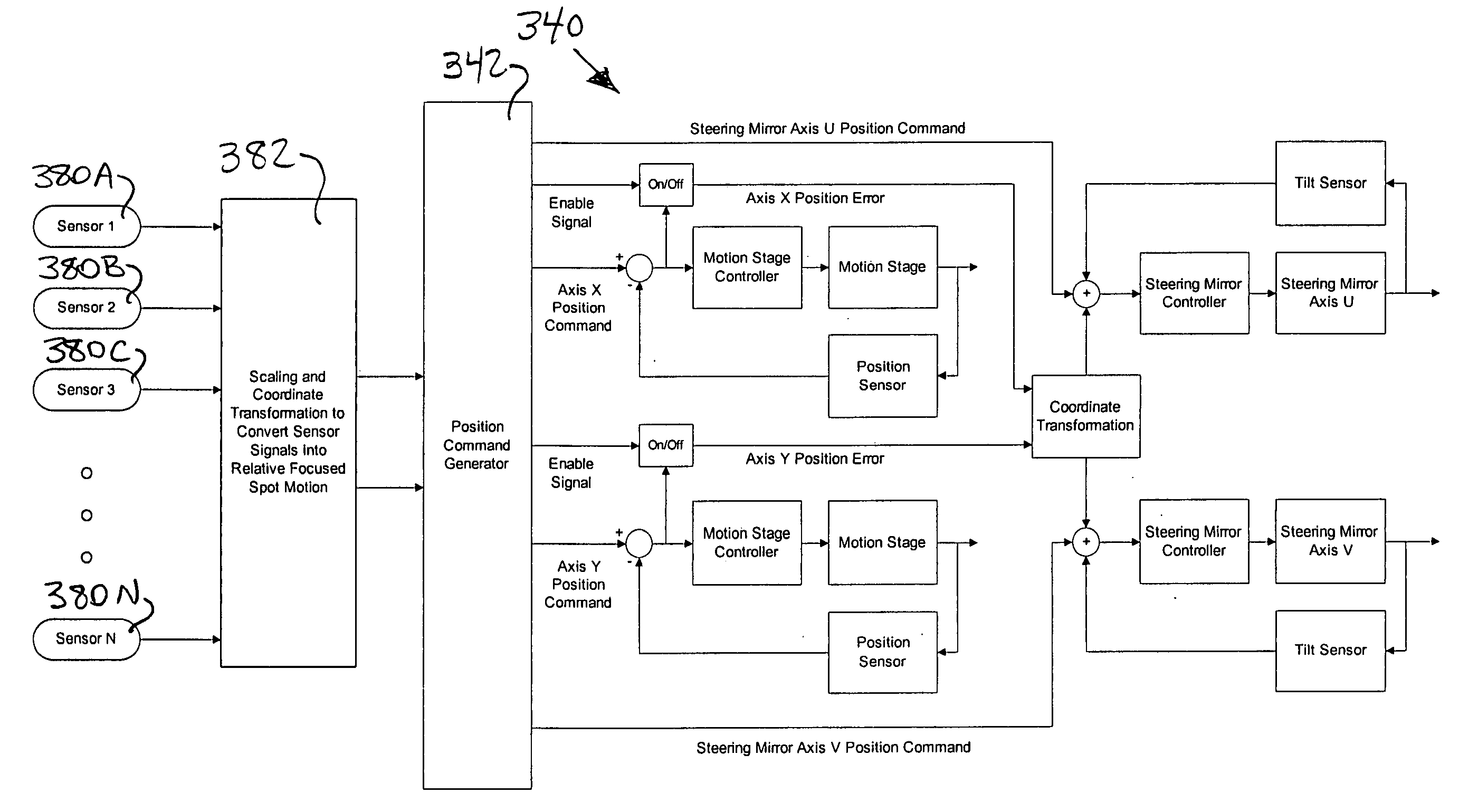On-the-fly laser beam path error correction for specimen target location processing
a laser beam and target location technology, applied in the field of integrated circuit laser processing, can solve the problems of limiting the effectiveness of “gap profiling”, affecting the efficiency of stacked stage positioning system, and affecting the accuracy of specimen target location processing, so as to facilitate the improvement of main positioning stage(s), facilitate the improvement of manufacturability, and eliminate the cross-axis settling time
- Summary
- Abstract
- Description
- Claims
- Application Information
AI Technical Summary
Benefits of technology
Problems solved by technology
Method used
Image
Examples
Embodiment Construction
[0049] One embodiment of a representative beam positioning system is described in detail in U.S. Pat. No. 4,532,402 of Overbeck, which is assigned to the assignee of this application. A preferred X-Y stage is a “Dynamix” model available from Newport Corporation of Irvine, Calif.
[0050] The beam positioning system preferably employs a laser controller that controls a stacked, split-axis, or planar positioner system and coordinates with reflectors to target and focus laser system output to a desired laser link 22 on IC device or workpiece 12. The beam positioning system permits quick movement between links 22 on the same or different workpieces 12 to effect unique link-severing operations based on provided test or design data. The beam positioning system may alternatively or additionally employ the improvements, beam positioners, or coordinated motion schemes described in U.S. Pat. Nos. 5,751,585, 5,798,927, and 5,847,960 of Cutler et al., which are assigned to the assignee of this ap...
PUM
 Login to View More
Login to View More Abstract
Description
Claims
Application Information
 Login to View More
Login to View More - R&D
- Intellectual Property
- Life Sciences
- Materials
- Tech Scout
- Unparalleled Data Quality
- Higher Quality Content
- 60% Fewer Hallucinations
Browse by: Latest US Patents, China's latest patents, Technical Efficacy Thesaurus, Application Domain, Technology Topic, Popular Technical Reports.
© 2025 PatSnap. All rights reserved.Legal|Privacy policy|Modern Slavery Act Transparency Statement|Sitemap|About US| Contact US: help@patsnap.com



